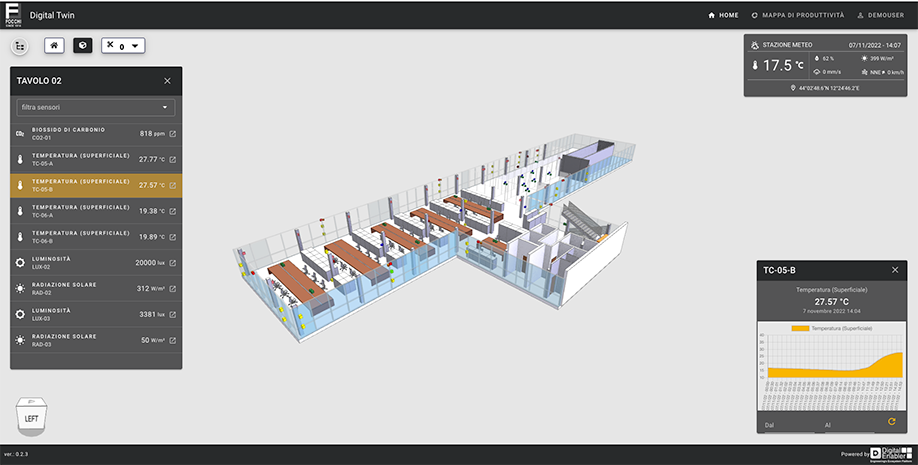The solution enables the rapid development of \"eXtended Digital Twin\" of Buildings. It provides a set of accelerators for Device Management over the edge, Data Mashup and Harmonization in Smart Data Models, deduction of information based on AI, import of BIM and rendering of Building Digital Twins
The solution for the eXtended Digital Twin is based on the Digital Enabler, the Engineering's ecosystem platform, keeping the following peculiarities on the top:
The main advantage of an XTD over BIM is the interaction between physical reality and the virtual model. In BIM, the model encompasses the physical entity’s geometrical and temporal information, yet it requires manual data insertion for updates due to the lack of linkage between the model and the physical entity, whereas utilizing a digital twin can provide mutual interaction between the two counterparts in real time. The use of sensors and the Internet of things (IoT) technologies easily allow a bidirectional transfer of information, updating the virtual model according to the physical counterpart’s live updates. Furthermore, due to the potential of performing simulations on the virtual model, future forecasting and optimization of the physical entity’s performances of the building are achievable, and thus the optimization of the physical counterpart’s performance can be reached. In XDT the data collection over the edge is performed through a component of the Digital Enabler named IoT Device Manager that has allowed the plug-in of devices installed in the building, provided by different vendors (in the specific use case, vendors are Schneider and Bticino) and the compliance with the edge computing model: a lightweight module is deployed nearby the curtain wall sensors and collects the data from them. Such module supports a plethora of IoT-specific protocols, like Modbus, BacNet, MQTT, and many more. The IoT Device Manager embeds all the FIWARE IoT Agents. Once the data is collected from the edge, the data harmonization using a no-code (i.e. graphical) approach is performed. In particular, the Digital Enabler component that is in charge of the data processing and harmonization is the Data Mashup Editor. This accelerator allows representing in NGSI-LD format the data gathered and integrated, using Smart Data Models. Once the data is harmonized in data models, it is analyzed both on the edge and on the cloud. The former feature is particularly relevant when a high-speed reaction is required; the latter is more relevant in case of historical analysis, training of AI models and in general, more resource-expensive activities. In fact, starting from environmental data gathered from the field (temperature, humidity, indoor pollution, irradiance), the solution is able to deduce information about indoor comfort and people productivity and show the data in the building Digital Twin, applying algorithms based on Artificial Intelligence.
Recently, the evolution of 3D models has been gaining high research attention in several fields, such as aerospace and manufacturing, as well as Architecture, Engineering, and Construction (AEC). The Digital Twin concept refers to developing a mirrored digital counterpart to a physical system and linking their information throughout the physical counterpart’s life cycle. The Digital Twin in construction is expected to augment architectural modeling as a progressive step that develops from Building Information Modelling (BIM) in the AEC field. The use of Digital Twins would contribute to making buildings smarter and enhancing their sustainability. The smart building is depicted as utilizing cyber-physical intelligence to improve building functions, provide more comfortable and safe conditions for people and businesses, and increase overall satisfaction. XDT (eXtended Digital Twin) aims at improving not only energy efficiency but to define a holistic view of the building: sustainability of logistics, energy consumption, communications, planning, safety, security, internal mobility, and liveability.
With the contribution of
Engineering Group (http://www.eng.it)
Focchi Group (https://www.focchi.it/it/)
eFM (http://www.efmnet.com/)
Università Politecnica delle Marche (https://www.univpm.it/)
Accelerating the development of AI Enabled Digital Twins (presentation to the Codemotion 2022 event in Milan)
